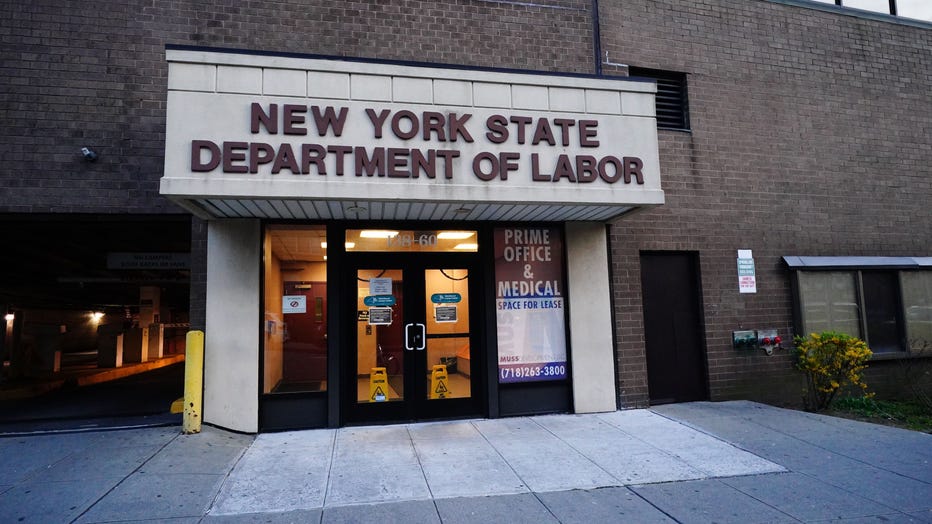Many laid-off US workers due to coronavirus might make more money with unemployment benefits
WASHINGTON - Roughly half of all laid-off workers in the United States could reportedly make more money in unemployment benefits than they did at their job prior to the coronavirus pandemic.
The outbreak of COVID-19 shut down a wide swath of businesses, leading to an estimated 1 in 6 American workers having lost their job over the past six weeks.
Unemployment benefits, combined with the additional coronavirus stimulus relief laws signed in March, means the average weekly payment to a laid-off worker should rise to about $978 — up from $377.97 paid on average in 2019, according to U.S. Department of Labor statistics reviewed by the Wall Street Journal.
To compare, half of the nation’s full-time workers earned $957 or less a week in the first quarter of 2020, data shows.

A view of New York State Department of Labor office in Queens during the coronavirus pandemic on April 12, 2020. (Photo by John Nacion/NurPhoto via Getty Images)
The relief package, known as the CARES Act, passed by Congress and signed by President Donald Trump in March, includes a $600-a-week boost through July 31, on top of unemployment benefits. The coronavirus stimulus will help give low-wage workers a sense of financial security in the coming months while the country deals with the effects of COVID-19.
RELATED: Coronavirus stimulus FAQ: Who gets stimulus money? Will paper checks be issued? When will it come?
The $600 boost works out to working full time at $15 an hour, which is the minimum wage level that many Democrats in Congress support. The federal minimum wage is currently $7.25 an hour, which has been unchanged for a decade and is followed by 21 states, according to the Economic Policy Institute.
As the Wall Street Journal points out, the result means some workers could ask their employers to leave them on furlough to collect larger payments, while simultaneously avoiding the risks of returning to a crowded workplace.
At the same time, it could also hinder efforts by companies looking to get their employees back on the payroll as states start to reopen — or so the business can qualify for government loan forgiveness.
RELATED: Small business loan program plagued by outages, delays as second wave of aid begins
This story was reported from Cincinnati. The Associated Press contributed.


